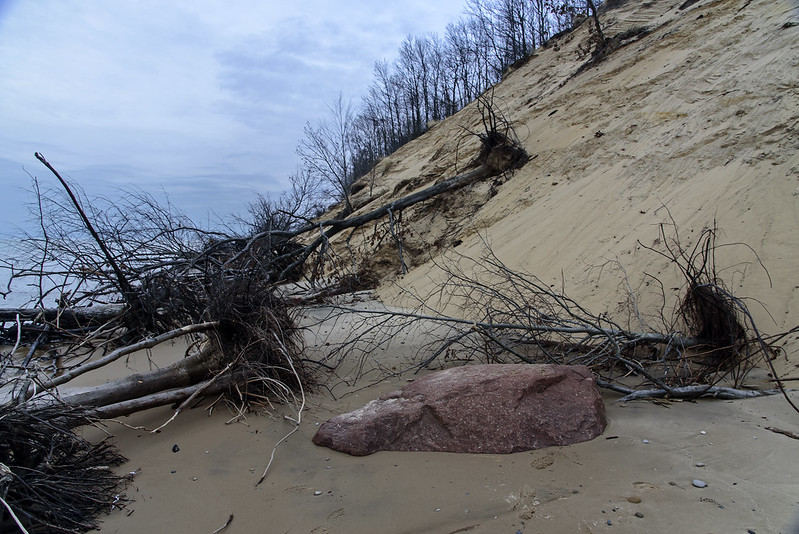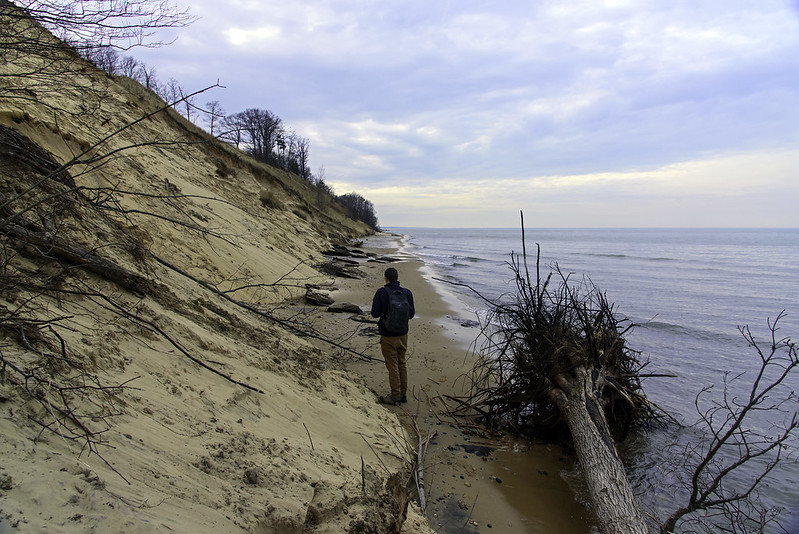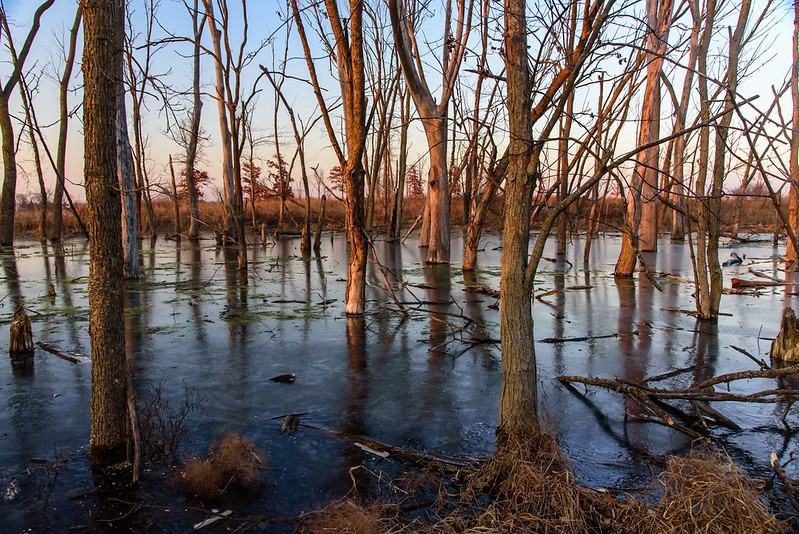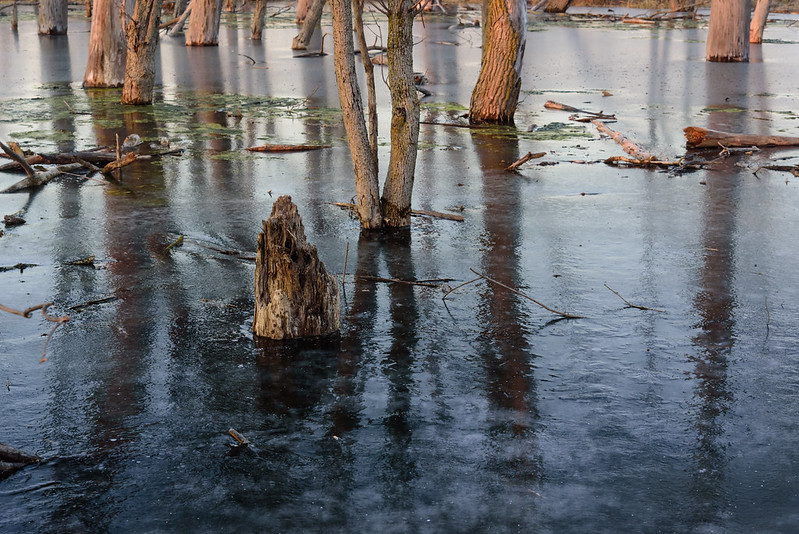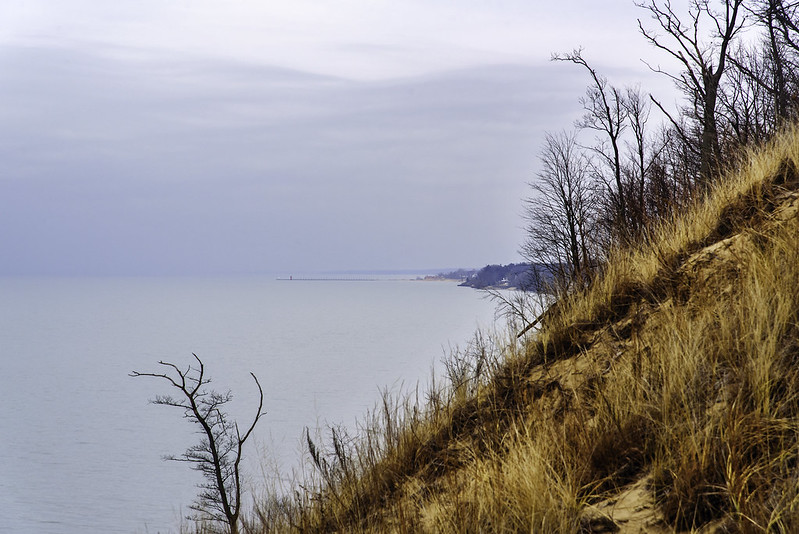
The clouds never moved away during our hike through the trails of Van Buren State Park in southwest Michigan. The horizon was sometimes indistinguishable over Lake Michigan, creating an eerie view from the rolling dunes, and at times giving us no point of reference.
From the top of the dune, we could see the South Haven lighthouse on the distant horizon. The park is approximately five miles south of the lighthouse, and we were surprised we could see it on this type of day.
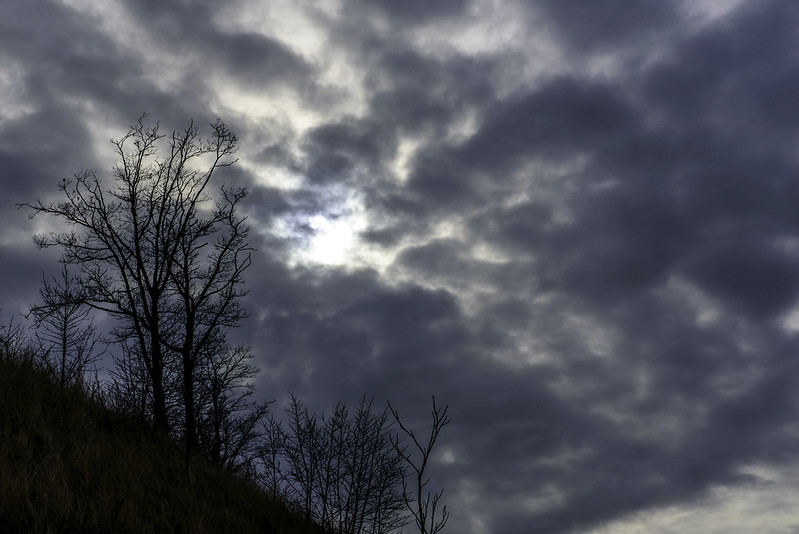
For just a few moments, a small hole in the clouds appeared, as we were walking south. The trees on top of the dune were silhouetted against the bright spot in the sky. The threat of rain subsided a bit, allowing us to plan for some additional miles of hiking at Van Buren State Park, and later at Grand Mere State Park, where we would see if we could spot the famous black bear seen near the park last year.

